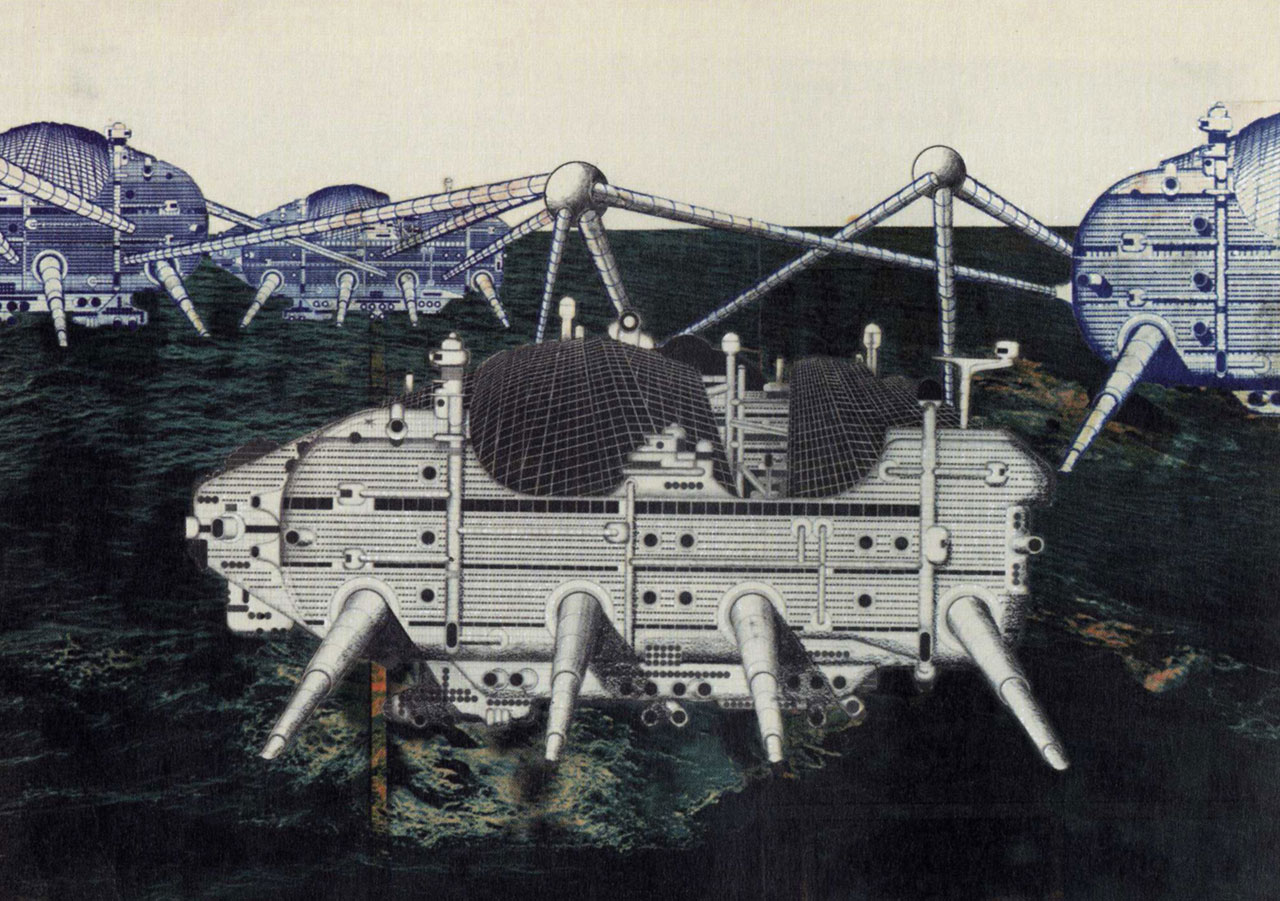
In the reading, ‘Migratory Cities’, the author Carl Abbott investigated in a fictional idea of a “moving city”. The major question is, what is the implication of a migrating city that is not grounded. As there is not a single moving city in real life, the author guided could only the readers through a chain of imaginations from related creative works from different fields such as film, architectural ideas and novels. By citing these imaginations from various authors, a collective idea on how a moving city would be like is formed in the reading. The mystery of a moving city is thought through the implications of different aspects. For instance Snowpiercer (2013) investigated in the social order of a moving city, Memory of Whiteness (1986) talked about ambience and scale of spaces, and some of those relate the moving city as a nomadic approach in finding resources.
Such thinking of a moving city is closely related to the architectural movement from the 60s when architects rethought architecture not solely as a single building but in relation to the urban. They were also concerned about whether architecture can keep its influence over time in a rapidly changing world. Such thinking is also mentioned in the reading by citing the drawing by Archigram. In the same period, Japanese metabolists also considered having a megastructure which is flexible in alteration according to rapidly changing trends. Theses thinking is quite crucial to how to perceive architecture. A moving city to me is a step further where these megastructures are movable. However, what does architecture mean when it is a moving island? The first thing that comes up to my mind is the contextual factor of it. As the moving city is not grounded, there will be an unstable context of the structure. For instance, the climatic factor in design will be constantly changing and thus it may also affect the culture and traditions of the people. How can the architectures adapt to it? The thing that comes to my mind is robotics and automation in structures. What if a building can constantly change its façade to adapt to various climates?
The immense power of sci-fi can stimulate the imaginations of futuristic ideas among the audience. It turns into a constructive power in shaping the future. I am quite sure that the latest technologies started with imaginations. For example, automated cars imagined by people years ago is turning into reality recently. In architecture, styles and functions also follow the trend, like how buildings turned into more like machines after the industrial revolution. The trend in thinking from different fields should always be kept tight. Film making can always be an influential mean in exchanging these ideas. That is why the reading was ended with “Planners and theorists are still coming to grips with the possibilies, and imaginative writers have an open invitation to step in and help.
LEUNG LOK YAN 3035479729
Excellent reflections on the idea of “migratory cities” or cities that move, especially the implications of mobility rather than buildings or cities actually moving. Your discussion on climate-responsive buildings is especially pertinent to current thinking in architectural education and practice on the environment. If sci-fi film has a “constructive power in shaping the future,” how in turn does contemporary architecture impact film’s imagination of the future?